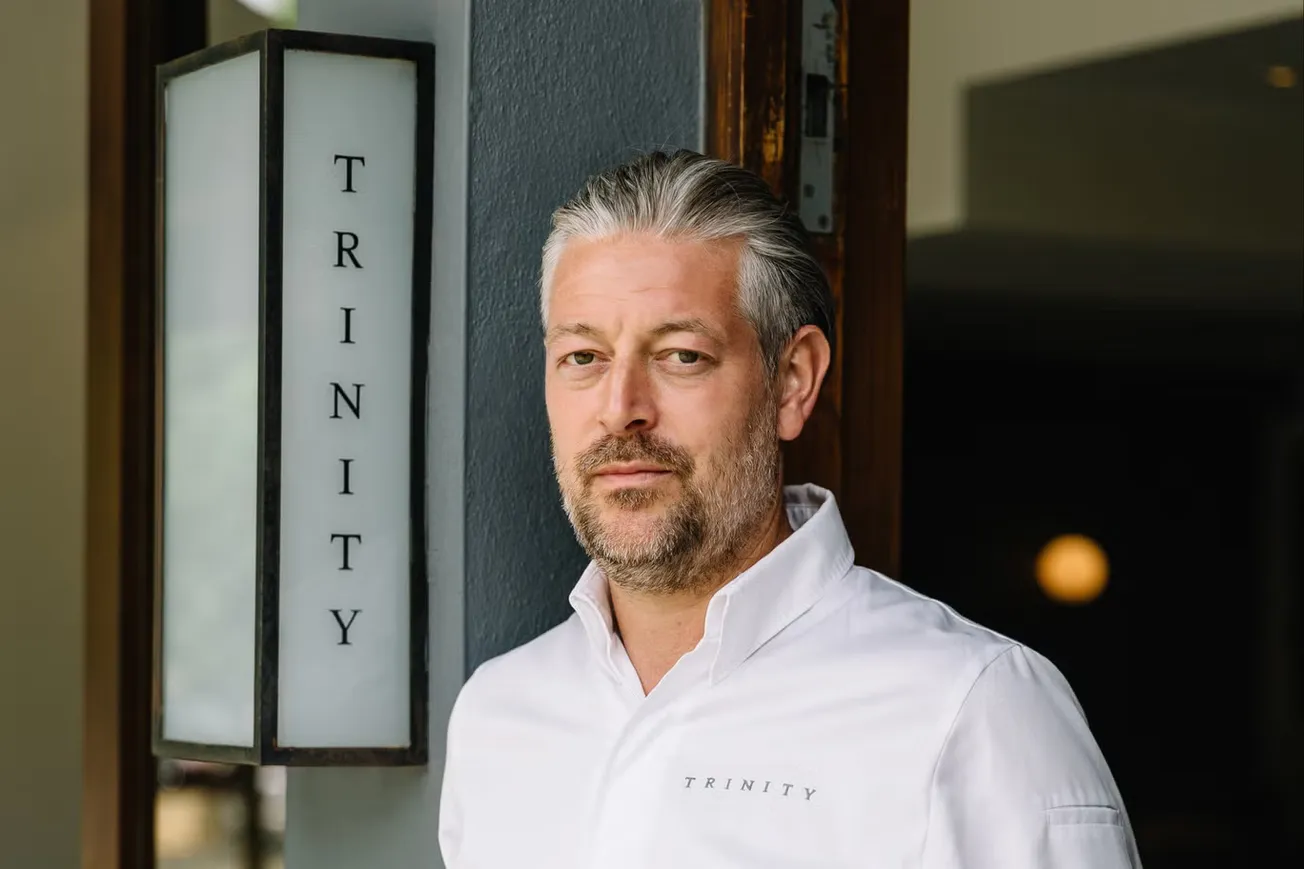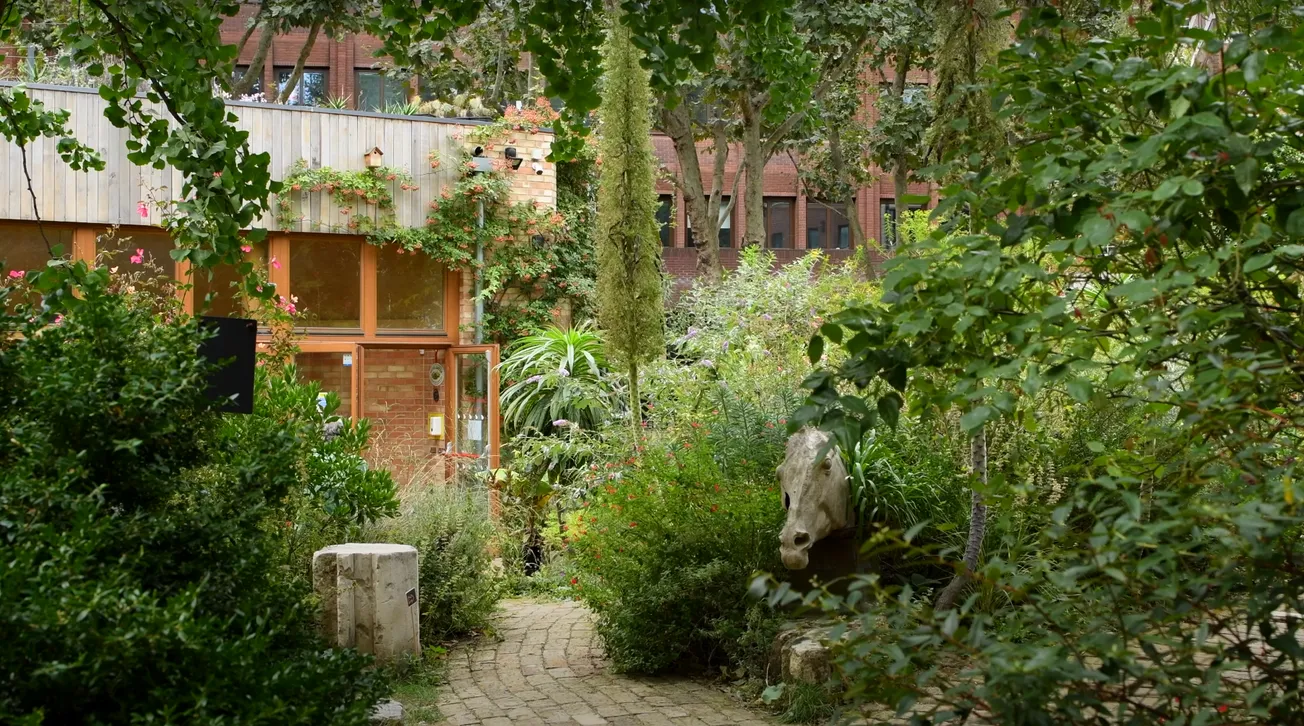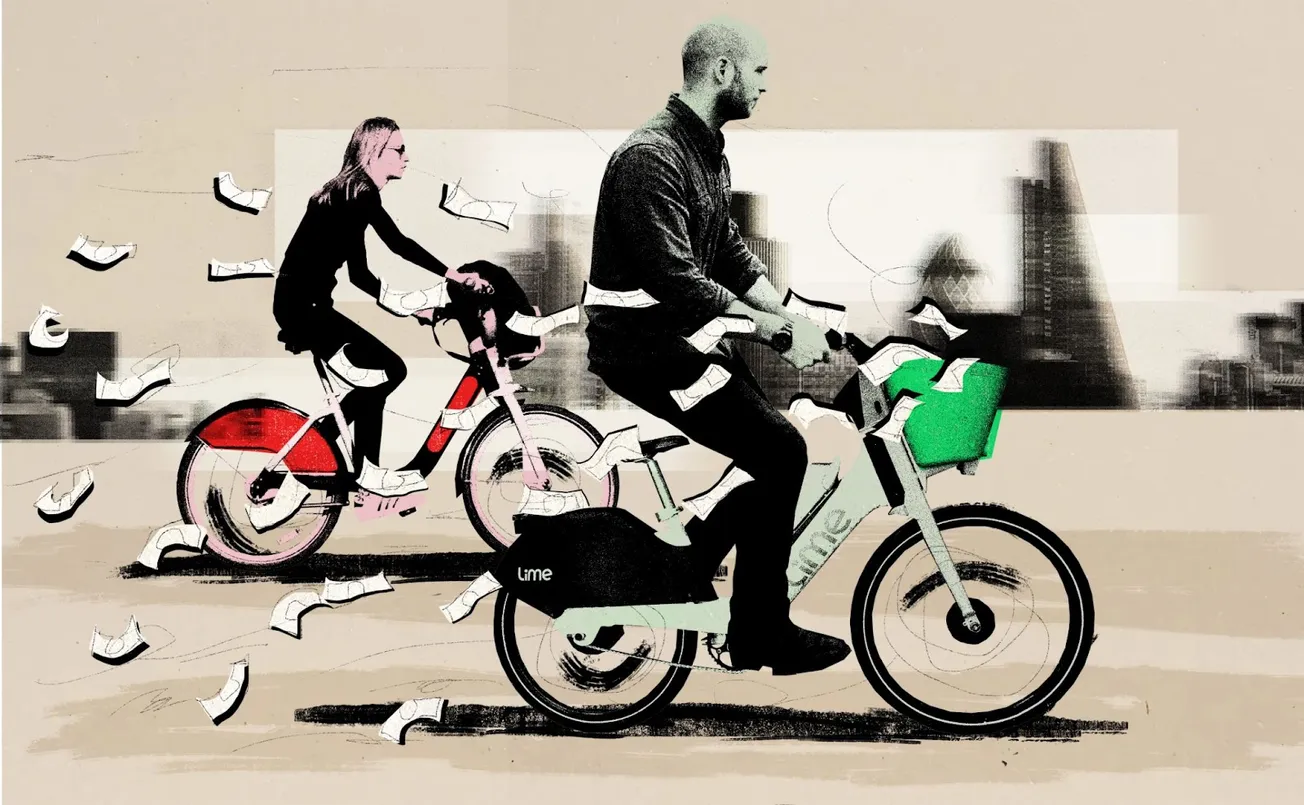June 1974. The shops were empty, the pubs closed, and the record store, usually blaring traditional Irish anthems, was silent. The hushed crowds amassed in their thousands, filling every inch of pavement on the Kilburn High Road. Some had come all the way down from Manchester, Liverpool and Glasgow — borrowing, without permission, minibuses from the schools where they worked and sleeping on the floors of local churches — just to catch a momentary glimpse of the body. When the coffin finally emerged outside into the summer sun, a gasp swept over the entire crowd; as it moved, they followed in silent unison. But, a few minutes after the procession had rounded the corner onto the main street, it came to a sudden stop. In front of them, a line of police officers was blocking the way.
Despite the decades that have passed since, Frank Glynn — lithe, with grey hair and an intense expression — talks about the day with a rare clarity. We’re sitting in the Colin Campbell pub, just metres from where the funeral procession passed. He had come to the capital from Ireland just two years before, he tells me, and as any good Irish émigré knew, that there was one place you moved to: Kilburn.
For years, this corner of northwest London, sandwiched between Maida Vale, Hampstead and Willesden, was known as the 33rd county of Ireland, such was the size of its Irish community. At one point in the 1950s and ‘60s, it felt like “17 out of every 18 people” in the area were Irish, as one Irish Times article put it. To this day, it still has the largest Irish community in London.
If you had to pick a single moment in history when County Kilburn was at its most vibrant, it was probably that summer day in 1974. The coffin belonged to Michael Gaughan, who days earlier had died while on hunger strike over the treatment of Irish republican prisoners in British jails. The government said it was a result of the hunger strike itself; his family said it came as a result of the constant violent forced feedings, in which he would be tied to the bed by guards, his mouth held open by a metal clamp and a tube pressed down his throat. His shocking death granted him martyr status among the Irish community in London, and would lead to the end of the policy of force-feeding prisoners in British jails.
His funeral procession in Kilburn drew thousands, even tens of thousands, according to Glynn. And while the stand-off with police threatened to escalate, after a few tense minutes, the mourners relented and his casket was placed into a hearse and taken to Heathrow, to be returned to Ireland. Looking at archive photos of the day, I spot Glynn, a perfect 1970s fashion time capsule with long brown hair and an unkempt moustache, a cigarette hanging loosely from his lips.
Following the route of the funeral procession now, it’s hard to tell there was ever a County Kilburn at all. All but three of the dozens of Irish pubs that once lined the route here have been shut — turned into betting shops, newbuild apartments or cheap Thai restaurants. Of those that have survived, all but one have been commodified, with owners about as Irish as a Shamrock keychain. The Irish-owned record stores, butchers or hardware stores are gone. The old theatre has been turned into a super church. Meanwhile the once neon-lit Galtymore social club has long since been demolished. Just the church on Quex Road, where Gaughan’s coffin first emerged, remains.
"I saw the Pogues in pubs with 50 or 60 people in them"
By the time Glynn arrived in London from County Clare in August 1972, its position as an Irish enclave inside England was already long-established. The first communities, locals tell me, came in the mid-to-late 19th century. The reasons for those first arrivals vary depending on who you ask. Some say its position along the Edgware Road — which follows the route of the old Watling Street, a historic road out of the city to the North that predates even the Romans — made it a stop-off point for traders coming from Ireland via Liverpool. Others say the first waves came as homes in the area were built for Irish railway workers.
Whatever the reason, the borders of County Kilburn were really demarcated after the second world war. Among the waves of migration from the Commonwealth, hundreds of thousands of new Irish migrants arrived in the UK, and particularly London, in the two decades after the war. Four out of every five children born in Ireland between 1931 and 1941 left the country, four-fifths of them for Britain. They came to care for the sick or build the city’s new homes, tunnels, railways and motorways, an experience immortalised by famed Irish folk singer Luke Kelly in “Come My Little Son”, a mournful story about a father forced to abandon his family to find work “in the cold and heat of the hours of the week on England's motorway”. But like many of the Commonwealth migrants to the UK, it was an experience defined by exclusion; an era infamous for signs saying “no blacks, no dogs, no Irish”. Kilburn offered security and safety in numbers at a time when that was far from a certainty.
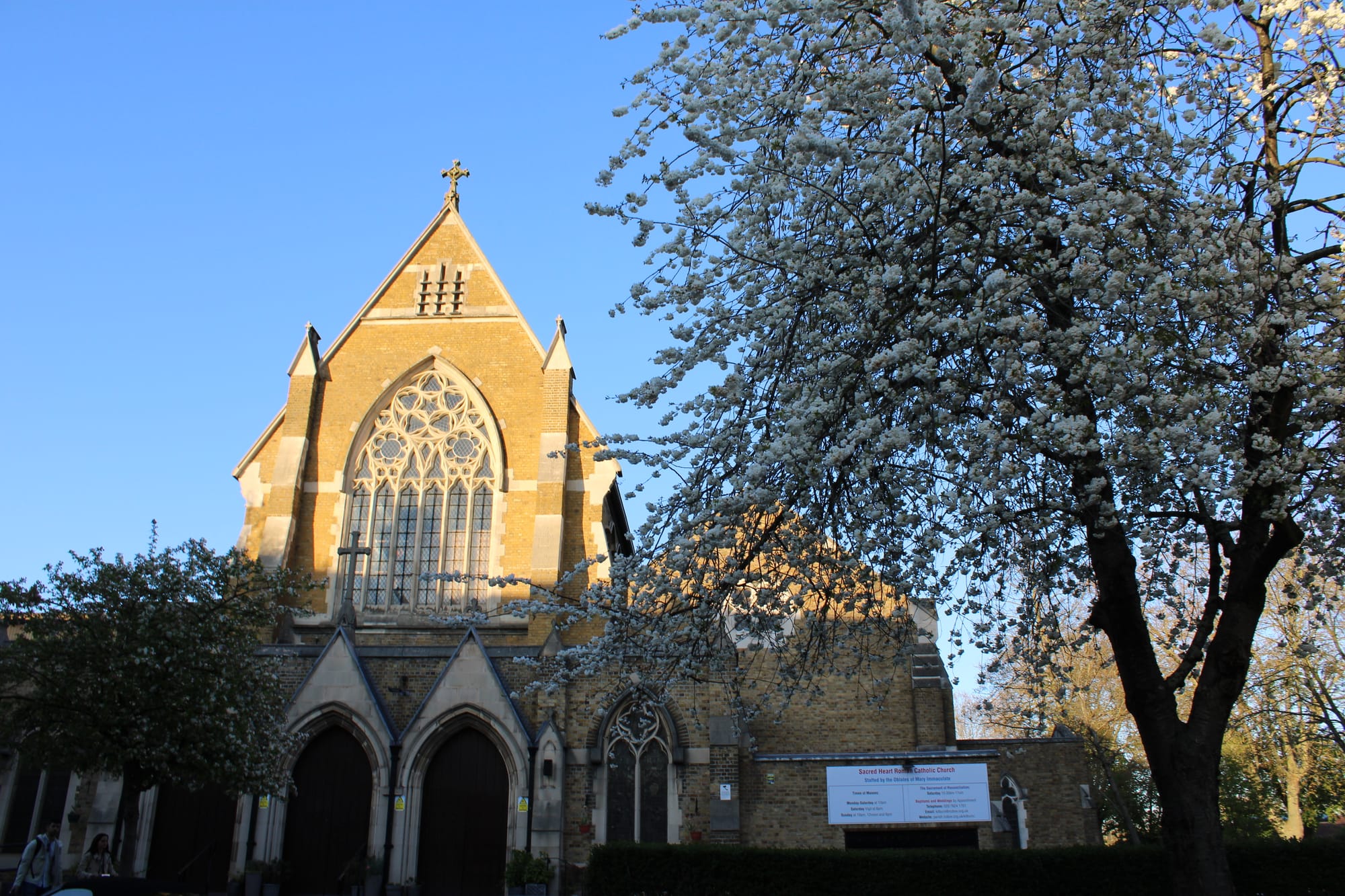
“People needed something familiar when they came here, so they followed each other,” says Catherina Casey. For the past two decades, she has been one of the leading figures in the Irish community in London — from managing the Irish Cultural Centre in Hammersmith to being the chair of the mayor’s St Patrick’s Day parade committee. “If you look at most migrant communities, that happens; you tend to go where people are of the same identity, whether that’s nationality, religion or language.”
And so almost immediately, a close-knit, insular Irish community developed in Kilburn. It was a diaspora that, in the face of such hostility and exclusion from the English, found comfort in their differences and retreated increasingly into the identity of their homeland. “Some of those kids would be better than any of us who grew up in Ireland at playing Irish instruments or even learning the Irish language,” says Casey. “It was a real badge of honour.” In the 1950s, when the ethnomusicologist Alan Lomax went to try and record “the last notes of the old, high, and beautiful Irish civilisation” he found as much of the old Irish music traditions alive in London as he did in Dublin, Cork or Mayo. Of the 27 pubs visited by architecture critic Ian Nairn for his 1966 guide Nairn’s London, the Crown in nearby Cricklewood was the only one where he felt the need to draw attention to its patrons; it was “full of Irishmen”, he wrote. In other words, the physical spaces of this corner of northwest London, maybe more so than any other part of the capital, were inextricably tied to the community that used them.
“Kilburn was home away from home,” explains Glynn. “You’d meet people from all four corners of Ireland.” The pubs were all Irish — so much so that each catered to people from different counties in Ireland. The same was true of most of the businesses; newsagents would all sell Irish newspapers. The Catholic church on Quex Road had to run six masses every Sunday to meet demand. Glynn remembers a record store on the Kilburn High Road — long since replaced by a nail bar — that would specialise in traditional Irish music and served as a hub for republican activists.
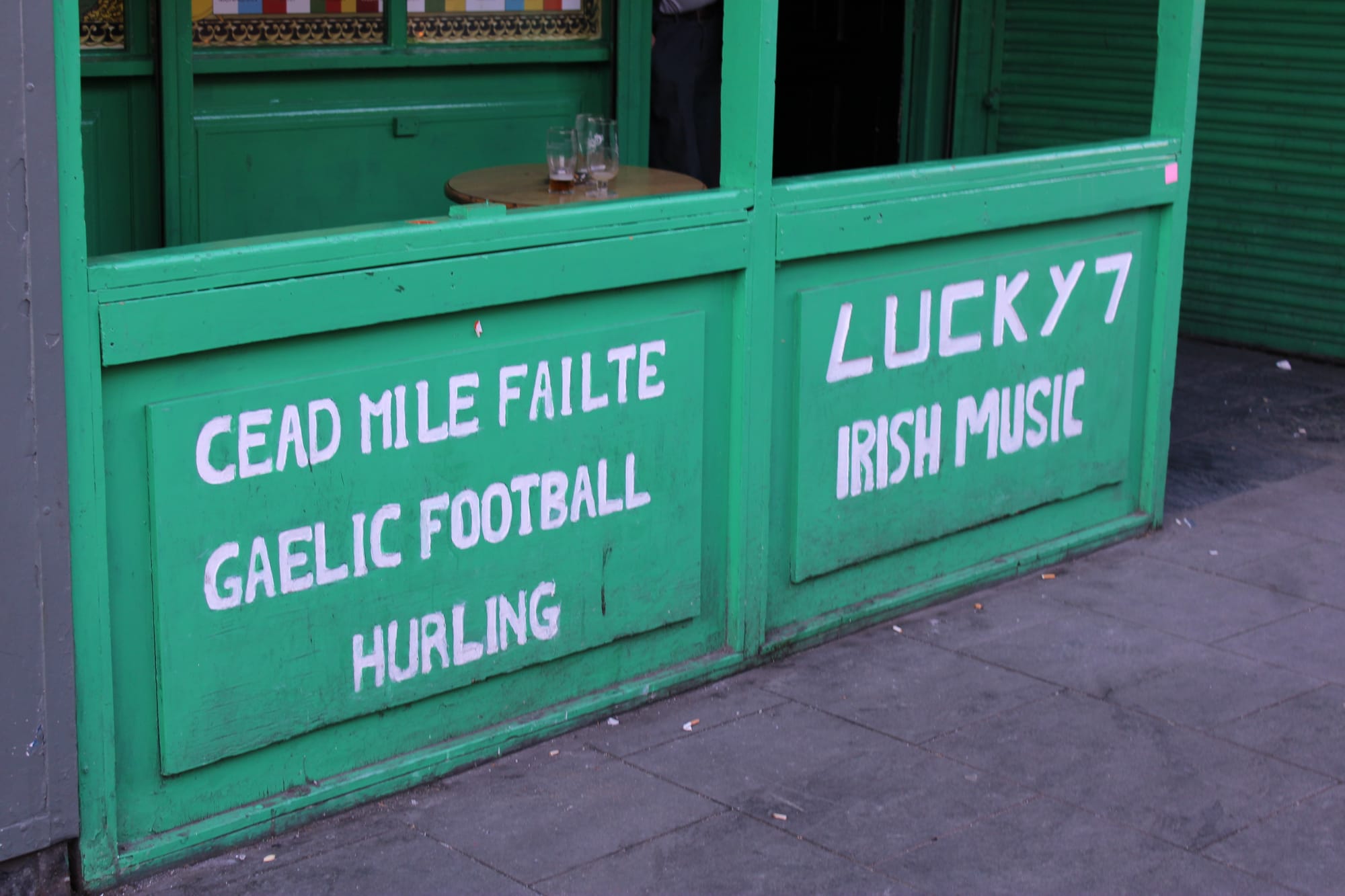
In those years, the IRA was stepping up its campaign to unify Northern Ireland and the Republic of Ireland. In 1973, it bombed the Old Bailey. It was to be the first of many attacks on civilians in England that would end up killing dozens. And as the IRA campaign to take the Troubles to England grew in intensity, so too did republican organising in Kilburn. Pubs like the Old Bell — one of the few survivors from that time — and Biddy Mulligans were famed recruiting grounds for Sinn Féin and the IRA. “You used to line your money up along the side of the pool table in the pub for you to play next,” one former resident told me. “And regularly, it would just be slid across from the edge of the pool table into their collection box.”
As the conflict got more violent, things started to change in Kilburn too. English Londoners started to change the way they saw the area’s Irish residents, a return to the abuse and mistrust that defined life for the first generations to come to Kilburn. “You’d be travelling to work on the trains reading the Clare Champion or the Irish Post and people started looking at you funny. We were all starting to feel a bit uncomfortable,” recalls Glynn. “I was buying a ticket at Baker Street behind a man I knew well, a man from the west of Ireland and with a strong west Ireland accent like myself. And he put on an English accent to buy the ticket.”
Just days before Christmas in 1975, Glynn was sitting in the Black Lion pub when he heard an echoing explosion. Bystanders ran into the pub, frantic. “They said there'd been a bombing at Biddy Mulligans,” he recalls. “We went down and got there before the police arrived.” It was a mess of people outside, cut, bleeding, in shock. By sheer luck, no-one had died. A member of the Ulster Defence Association (UDA), an extremist paramilitary group vehemently opposed to Irish republicanism, had walked into the pub carrying a two-kilogram pipe bomb inside a holdall as revenge for the area’s perceived allegiance to the IRA. It was the first bombing by the UDA outside Northern Ireland: Kilburn had become a frontline for a war playing out hundreds of miles away.
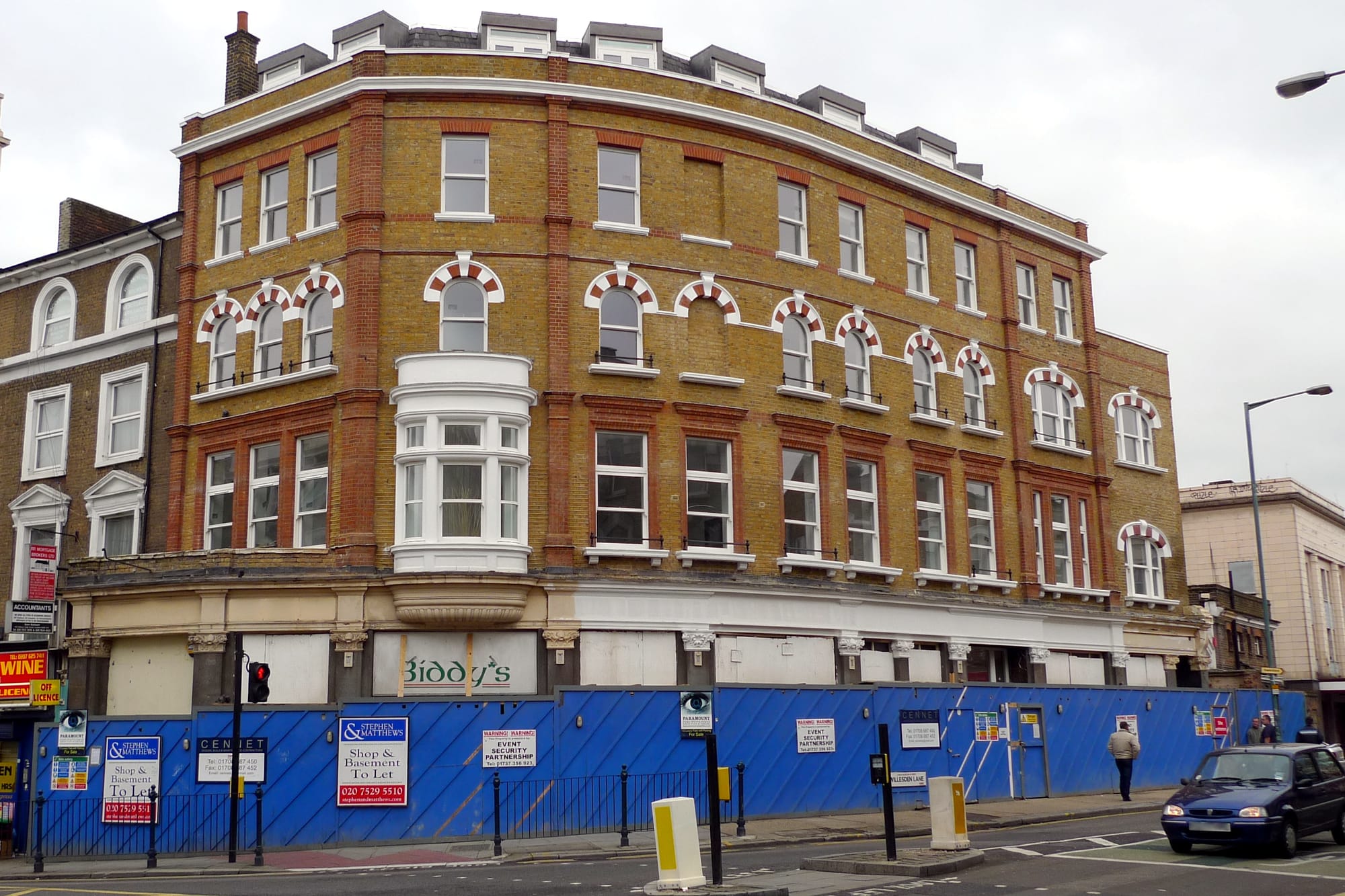
In the years after that bombing, the once apolitical Glynn found himself increasingly on the frontline of organising for the republican movement and Sinn Féin in Kilburn. He leafletted, collected donations and sold republican newspapers. He made friends with the leading organisers in the area. He organised vigils for IRA members like Bobby Sands, who died while on hunger strike in a Northern Irish prison. He led marches from Hyde Park, where they would be ambushed from all sides by fascist members of the National Front who tried to stop the march, and its Irish flag, from making it back down the Edgware Road to Kilburn.
But there was more to Kilburn than politics. A lifelong East Londoner, Clifford Roney first came to Kilburn as a Thames Water apprentice in 1979. He would spend the next few years returning to the area, trying to unionise its Irish workers — often to no avail. But the place stayed with him: he’s one of dozens of people of a certain generation I’ve met in London over the years who often veer wistfully, without prompting, into anecdotes about their time in County Kilburn.
For Roney, it was all about the music. Not just Irish music either. Throughout the 1970s, the Gaumont Theatre hosted The Who, Black Sabbath and David Bowie. And like neighbouring Camden, the area was a hub for London’s growing punk movement. Ian Dury named his first band after the area: Kilburn and The High Roads. Those new movements would merge with Irish folk traditions and give birth to bands like The Pogues, who, along with acts like The Undertones, would frequent the music pubs and bars of the area, such as the Castle in Cricklewood — now a nondescript block of newbuild flats. “I saw the Pogues in pubs with 50 or 60 people in them,” he recalls. “I'd be the only white English boy there.”
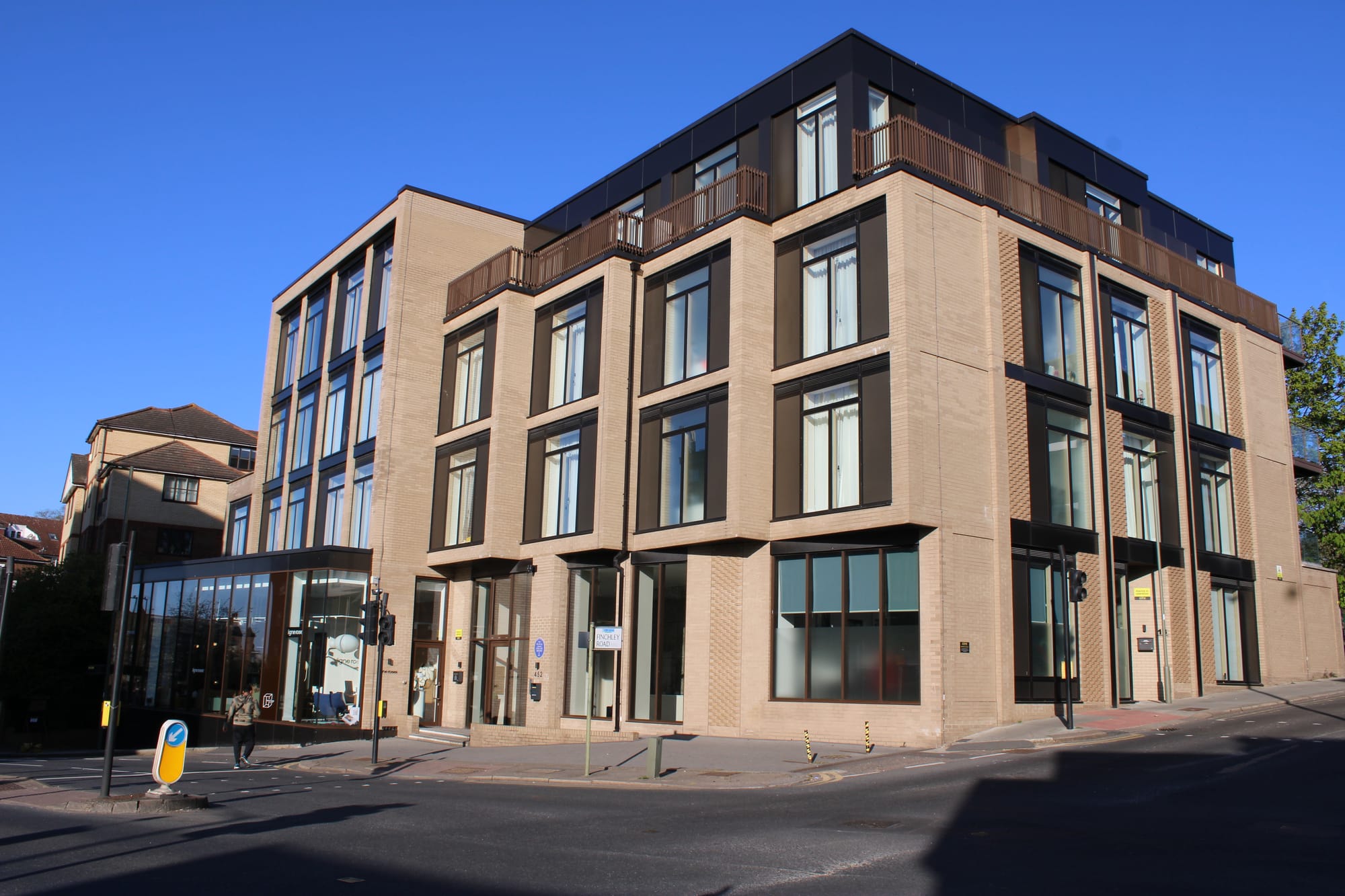
Eventually, work drew Roney away from northwest London. Meanwhile, Glynn, now married and with kids, wanted to settle down in a home of his own. Like many of his generation in Kilburn, he bought a (cheaper) home in areas in the further reaches of northwest London: Neasden, Willesden or Wembley. As the older members of County Kilburn started to move away, the number of new migrants from Ireland started falling. The Irish-born population in England and Wales slumped to the lowest it had been since the 1930s. Those who did come, often more middle class, white collar and less tied down than their parents and grandparents, would find their homes elsewhere in the city: initially in Clapham, and then further afield in Hackney or Finsbury Park. The pubs, clubs, record dealers, butchers, hardware stores and churches of County Kilburn fought the tide for a little while. But as the years went on, they too were forced to shutter — gradually, at first, then all at once.
Entering the mainstream
Marc Scully has spent much of his career trying to define what it means to be Irish in London. A lecturer in psychology at Mary Immaculate College in Limerick, he tells me he has to put down the phone before he talks about his research: “When I talk about it, I tend to wave my hands around a lot.”
Scully theorises that there were three key periods for the Irish diaspora in London. First there was the 1950s, an era of “general anti-Irish discrimination” and then, as that subsided in the 1970s and 1980s, there was the “suspect community period”, when Irish people were ostracised as a result of fears about the growing militancy of the IRA. Both eras were fundamentally defined by othering. But by the 1990s everything changed. With the advent of the Good Friday Agreement and the end of the IRA’s bombing campaign in England, the lines separating the Irish community from the rest of England started to fall away. And with that change, Irish culture started to enter the mainstream.
“A lot of people I speak to in my research would have said that, suddenly, in the 1990s it was cool to be Irish,” says Scully. He calls that period “Riverdance revivalism”, a new Irish diaspora identity formed less on the old pillars that had been so central when the London Irish were so ostracised, but around cultural touchpoints. But such an identity — without shared anchors like faith, politics, professions, class or even just physical spaces — is much harder to pin down. When I ask Casey and Scully about what it means to be an Irish Londoner now, they cite things like Guinness or celebrities like Paul Mescal and Cillian Murphy.
Today, Irishness is as on-trend as it’s ever been — and increasingly chic among English people. Casey tells me this year’s London St Patrick’s Day parade was one of the most attended in the event’s history. Guinness is now so popular that there have been recent national shortages, and resurgent Irish pubs like the Devonshire, Mannions Prince Arthur and Skehan’s are just as, if not more, likely to be filled with English people than Irish. Scully tells me a growing subgenre of “Irish Pubs™” are taking over London, places that are more likely to show England football games than hurling or Gaelic football. “It’s more about branding than about community,” says Scully.
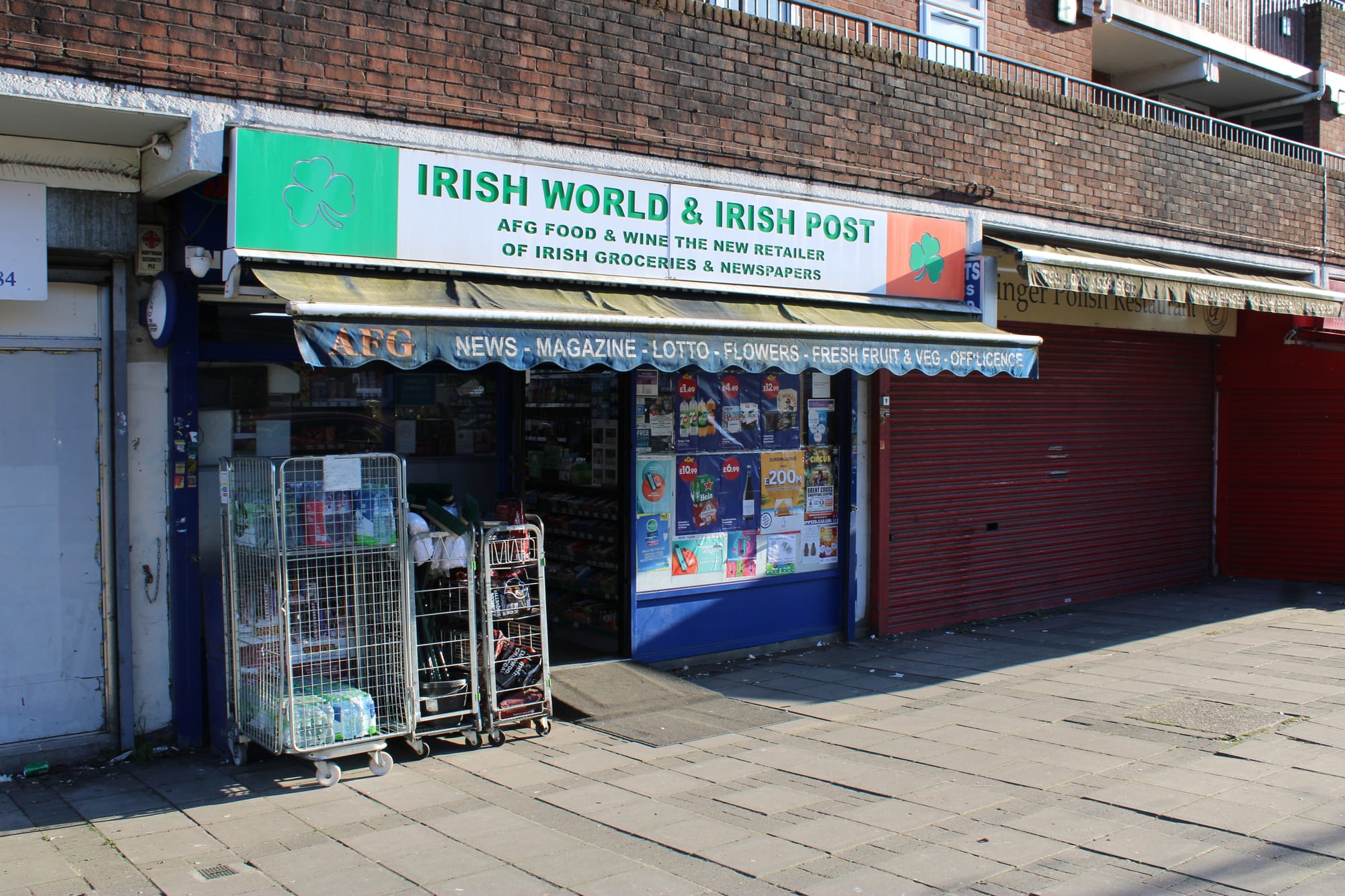
The alternative — a singular unchanging, performatively Irish district — is not much better. Change and flux is vital; stagnant culture is, by its very nature, unappealing. “Just because Irish people don't live in Kilburn anymore,” as Scully puts it, “it doesn't mean the Irish community is gone, more that it has fluctuated, shifted and changed.”
In 2021, Casey launched the Irish in London website, an attempt to share her encyclopaedic knowledge of every Gaelic corner of the capital with other migrants. Now, she says, she’s inundated by visits, messages and emails from Irish Londoners trying to find a shred of their home in the capital, be it in community groups, sports teams or just good pubs that air Gaelic football matches or have Irish music. “Irish people want to find each other,” as Casey puts it. I get the sense that, as the community has become harder to pin down and its physical anchors like Kilburn have disappeared, the Irish identity in London has become an active process, something to be shaped and found rather than inherited.
As I’m polishing off the last drops of my beer (not Guinness) with Glynn, an uncharacteristic silence descends over the conversation. He hosted a memorial for Gaughan last summer to mark the 50th anniversary of his death. The streets weren’t lined, and no shops closed; this time, the group of mourners all fit inside a minibus. He confesses how strange it is to see just how little there is left of the Kilburn that shaped so many decades of his life. As is so often the case, some histories — those of the wealthy and influential — are deemed more worthy of preservation than others. The rest disappear, like drops of water swallowed underneath the waves of an ever-changing city. “There’s no evidence we were real,” Glynn tells me. “We built the roads, we built the tunnels, but we built no pyramids to let the people know we were here.”
Editorial note 22/04: A reference to UDF has been amended as it was in reference to the Ulster Defence Association (UDA) not the Ulster Defence Force.
If you haven't already, you can become one of our founding members by subscribing to The Londoner with our forever 20% early-bird discount. Click here to forever get an annual membership for the discounted price of £71.20, or click here to forever get a monthly membership for £7.16. Hurry though — this offer lasts only until the end of April.

Comments
How to comment:
If you are already a member,
click here to sign in
and leave a comment.
If you aren't a member,
sign up here
to be able to leave a comment.
To add your photo, click here to create a profile on Gravatar.


